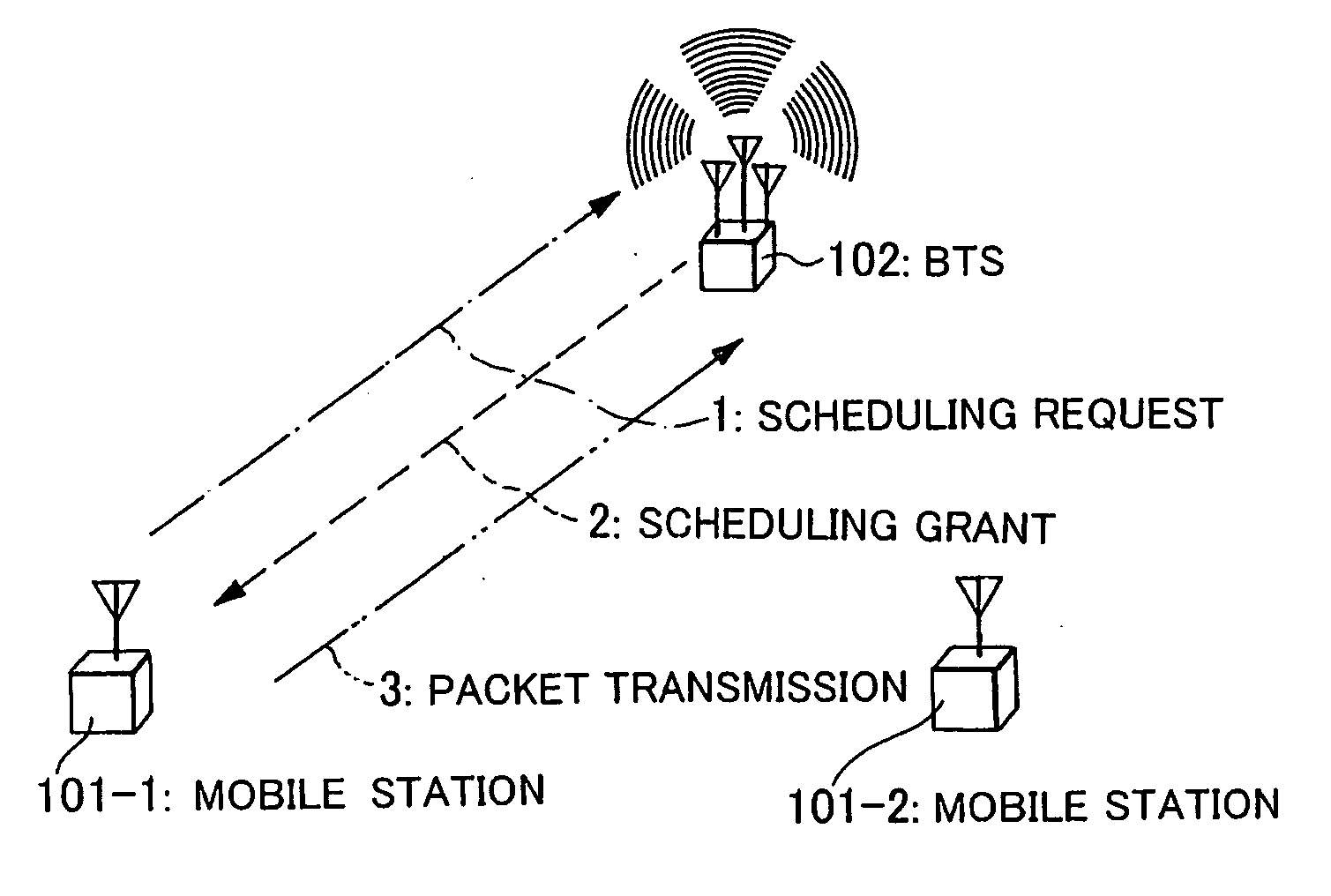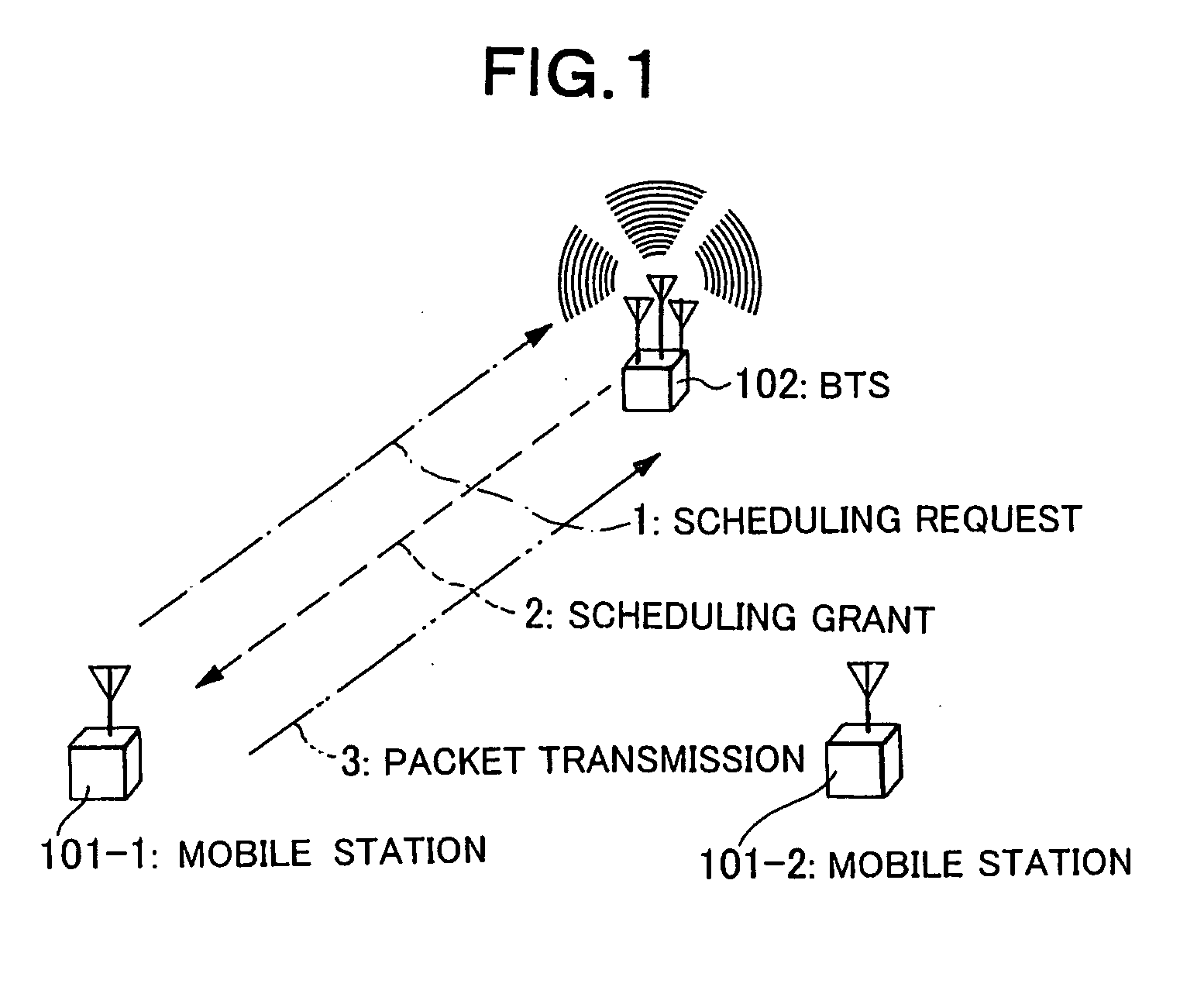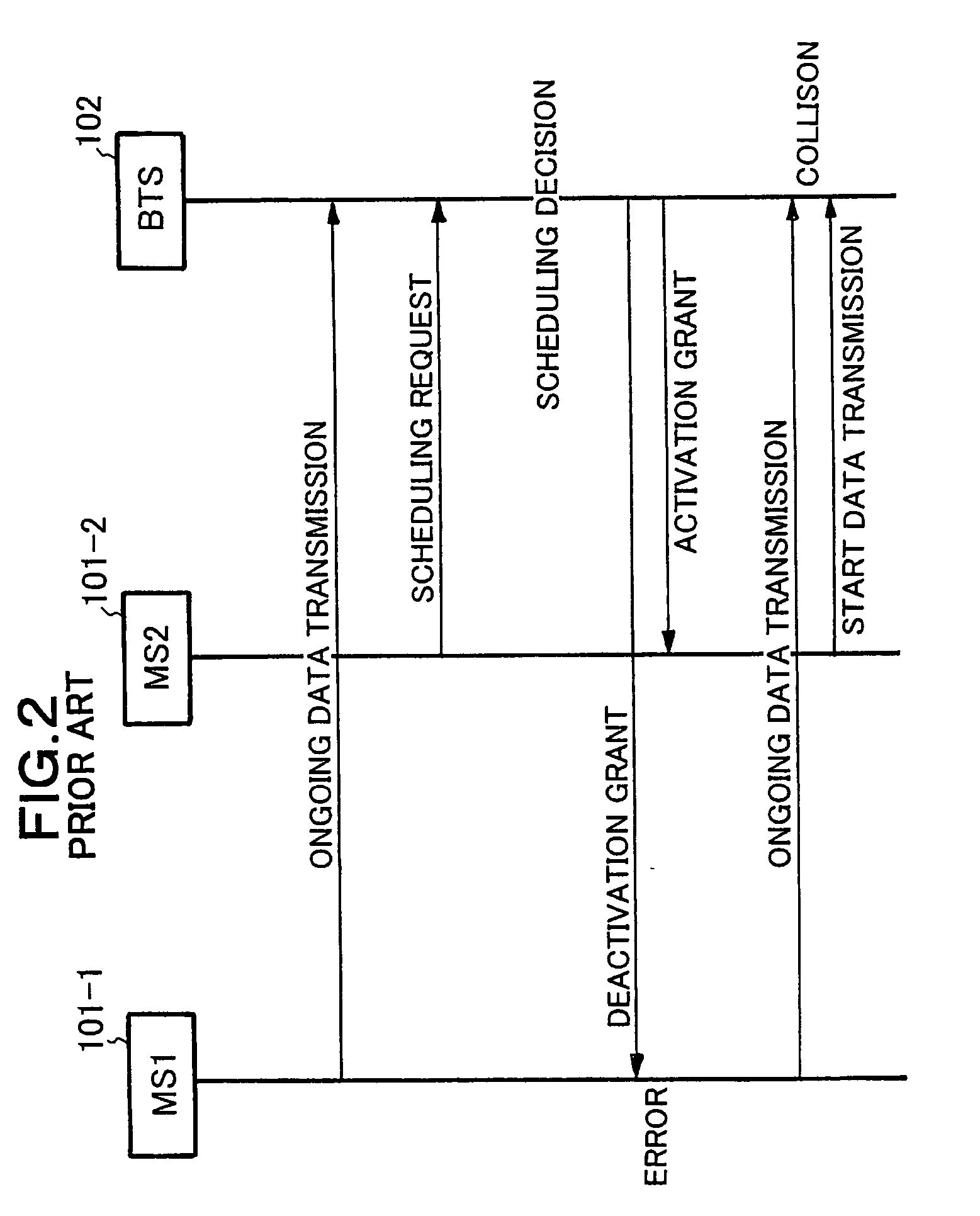Method and system for controlling a plurality of transmitters
- Summary
- Abstract
- Description
- Claims
- Application Information
AI Technical Summary
Benefits of technology
Problems solved by technology
Method used
Image
Examples
first embodiment
[0043]FIG. 3 illustrates a system comprising a plurality of mobile stations 101 which are connected to a base station 102. Though, only one mobile station 101 is illustrated in FIG. 3, other similar mobile stations 101 not shown are also connected to the base station 102. The mobile station 101 transmits packets to the base station 102.
[0044] Data buffer 201 stores packets to be transmitted to the base station 102. The adjuster 202 supplies packets stored in the data buffer 201 when sending the packets to the base station 102 is activated. Transmitter 203 sends the packets supplied from the adjuster 202 to the base station 102 and sends messages, such as a scheduling request message, a scheduling grant confirmation message, to the base station 102. The transmission rate of the packets from the mobile station 101 is controlled by the base station 102 by scheduling grant messages from the base station 102. Receiver 204 receives messages, such as an activation scheduling grand message...
second embodiment
[0090] The following describes a second embodiment of the present invention.
[0091] The second embodiment is based on the system of the first embodiment as shown in FIG. 3.
[0092] The second embodiment is based on the detailed mobile station procedure in the first embodiment as shown in FIG. 4, except the following:
[0093] The mobile station 101 does not send the scheduling grant confirmation message at step 303 in FIG. 4, even when it successfully receives the deactivation scheduling grant message from the base station 102 and goes the step 304.
[0094] The mobile station 101 resets the stop timer 209 using the deactivation timing information attached to the deactivation scheduling grant message. The deactivation timing information varies depending on the transmission time of the deactivation scheduling grant message, if deactivation timing information is represented by the number of counts to be counted by the stop timer 209, in order to designate the same absolute deactivation tim...
third embodiment
[0104] The following describes a third embodiment of the present invention.
[0105]FIG. 8 illustrates one of a plurality of mobile stations 101 and a base station 102 in a system comprising the plurality of mobile stations 101 which are connected to the base station 102 according to the third embodiment. Though, only one mobile station 101 is illustrated in FIG. 3, other similar mobile stations 101 not shown are also connected to the base station 102.
[0106] The difference between the structure of the base station 102 according to the first and third embodiments is that the reliability controller 210 is added. Other members in the base station 102 are identical.
[0107] The third embodiment differs from the aforementioned conventional technology (as shown in FIG. 2) in that the base station 102 controls one or more different reliability factors depending on whether it sends deactivation or activation scheduling grant message to the mobile station. The probability of successful recepti...
PUM
 Login to View More
Login to View More Abstract
Description
Claims
Application Information
 Login to View More
Login to View More - R&D
- Intellectual Property
- Life Sciences
- Materials
- Tech Scout
- Unparalleled Data Quality
- Higher Quality Content
- 60% Fewer Hallucinations
Browse by: Latest US Patents, China's latest patents, Technical Efficacy Thesaurus, Application Domain, Technology Topic, Popular Technical Reports.
© 2025 PatSnap. All rights reserved.Legal|Privacy policy|Modern Slavery Act Transparency Statement|Sitemap|About US| Contact US: help@patsnap.com



